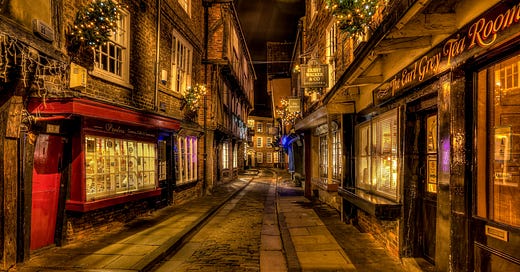York, a city steeped in history and whispered tales, holds more than just ghost stories within its ancient walls. Beyond the chilling accounts of plague houses and Roman legions, there lurks a creature of local folklore, a harbinger of ill fortune: the Barghest.
While its legend isn't confined to York alone, the Barghest holds a prominent place in the folklore of Northern England, particularly Yorkshire. This shape-shifting entity, often described as a monstrous goblin dog with immense teeth and claws, is far more than just a scary beast. It's an omen, a chilling premonition of death. Local lore warns that any wound inflicted by the Barghest will fester, a constant, agonizing reminder of the impending doom.
The origins of the name "Barghest" are shrouded in mystery. One intriguing theory, as explored on Episode 14 of the Wyrd Wessex podcast, suggests a combination of the Anglo-Saxon "Burh," meaning fortified town, and the German "Geist," meaning ghost, as in Poltergeist. Other possibilities include derivations from the German words "Berg" (mountain) or "Bär" (bear). This linguistic ambiguity only adds to the creature's mystique.
The Barghest's shape-shifting abilities further contribute to its terrifying nature. While its dog form is the most common, reports from the 1870s describe it morphing into a headless man, a headless lady, a white cat, a rabbit, and even a black dog with fiery eyes and rattling chains. This ability to appear in various guises makes it all the more unpredictable and frightening. Like many creatures of folklore, the Barghest is said to be unable to cross rivers and only appears at night, adding specific limitations to its reign of terror.
Perhaps most chilling of all is the belief that a sighting of the Barghest is a sure sign of imminent death. To cross paths with this spectral being is to receive a death sentence, a terrifying glimpse into your own mortality.
Adding a particularly Yorkish flavor to the legend is the Barghest's association with the city's snickleways. These narrow alleyways, a defining feature of York, become a labyrinthine hunting ground for the Barghest, which is said to stalk lone travelers within their winding paths. The very word "snickleway," a delightful combination of "snicket," "ginnel," and "alleyway" coined by Mark W. Jones in 1983, evokes the hidden, shadowy nature of these passages, making them the perfect setting for such a chilling encounter. Imagine walking alone at night, the darkness closing in, the twisting snickleways disorienting your path, and the chilling thought that the Barghest might be lurking just around the next corner... waiting.
Check out Episode 14 of Wyrd Wessex here
or watch on Youtube here



